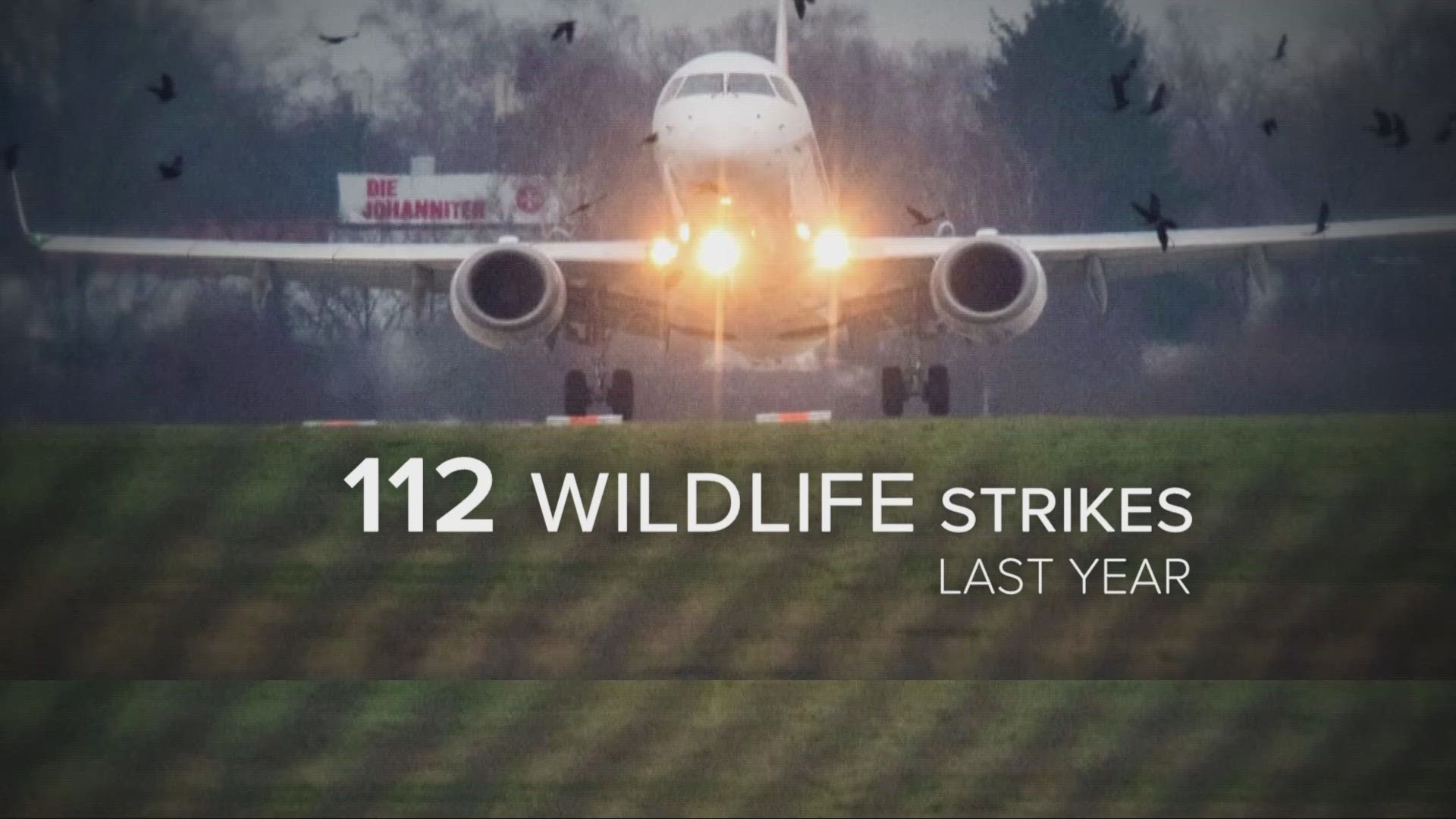CLEVELAND — On the runways at Cleveland Hopkins International Airport, Matt Moro is on a never-ending quest to keep wildlife dangers away.
"Cleveland Hopkins and Cleveland is known as the 'Forest City,' right?" said Moro, the airport operations supervisor. "So when [the birds] see the airport, it's like a prairie in the middle of the woods, essentially."
Bird strikes are an everyday threat for planes, but losing an engine is rare.
But it happened last weekend on a flight from Columbus to Phoenix, when American Airlines flight 1958 flew right into a flock of Canada geese. The right engine became engulfed in flames, forcing the plane to return to Columbus for an emergency landing. The 737 jet managed to return safely, landing with a single engine.
A flock of geese also took out both engines of a U.S. Airways flight in 2009, forcing an emergency landing on the Hudson River, called the "Miracle on the Hudson," after everyone survived the icy river landing.
By using flares and other pyrotechnics, along with remote-controlled air cannons, Hopkins ground crews are constantly clearing the runways of wildlife -- and it's not just birds. Moles, voles, groundhogs, and mice are a problem, too. Any animals that might attract birds must be removed as well, even worms that surface after heavy rain.
Last year, there were 112 wildlife strikes by planes at Hopkins Airport, two of the strikes damaged planes. Of those two, one involved a Canada goose, the other was a plane impact with a redtail hawk.
After a bird strike, Moro uses a bird forensic kit to collect what is known in aviation slang, as "snarge." The snarge sample is sent to the Smithsonian Natural History Museum, which receives up to 100 bird remains a day from airports trying to identify the species posing a risk, by matching DNA samples with 500,000 specimens on file.
"It's a 24-7 job for sure, and there's actually a lot of science to it," said Dejan Radosavljevic, assistant commissioner of airport operations. "The end goal is protecting the passengers and the aircraft and getting everyone safely to their destination and back home."

